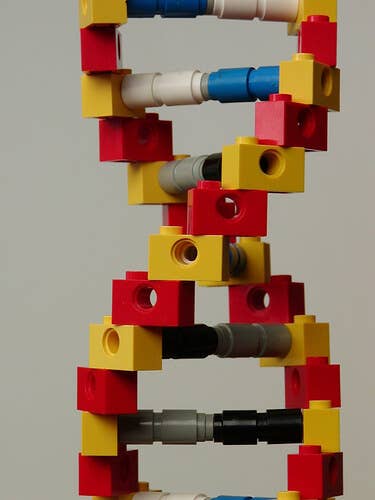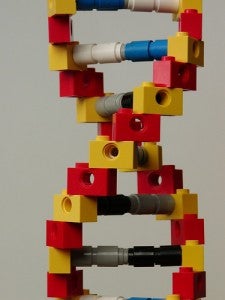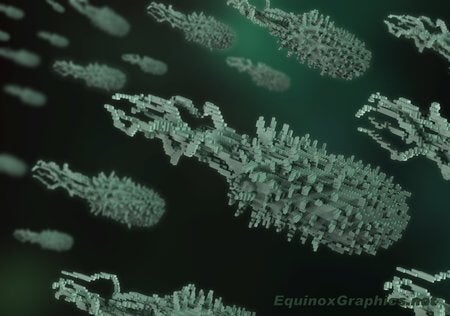MIT is Organizing New Genetic Parts

Share
If you want to check out a book you go to the library. If you want to get a copy of the latest DNA, you go to MIT's Registry of Standard Biological Parts. Started in 2003, the Registry has developed from a few stored genes to a collection of more than 3000 genetic parts that can be spliced into DNA to modify an existing organism. Need your bacteria to glow in the dark? Want yeast to produce a banana smell? The Registry might have what you need. It's a candy shop for synthetic biologists and it's changing what genetic engineering can accomplish.

While there are some costs associated with getting genes from the Registry, it's not really a store. The registered segments of DNA are stored and shipped on a looser "get some, give some" exchange. Those users who request and utilize these biological parts are expected to share some of their results and innovations with everyone else. Sort of the biological equivalent of the take-a-penny-leave-a-penny tray at the corner store.
Before you start sending your genetic requests to MIT, I should point out that the Registry is for established scientists only. Do-it-yourself biologists need not apply. Most of those who receive parts are from academic labs, and/or forming a team to participate in iGEM, MIT's annual genetic engineering competition. Still, the wide range of users gives this registry a scope that promises to catapult synthetic biology into its next phase of evolution.
She's a brick house...
When you're asking for a few parts, the Registry is your place to sift through and plan. But how can you be sure to splice the DNA into your creation in the right way? How can you make sure that each part you want is complete? Thankfully, the registry conforms to the Biobricks ™ standard. Biobrick ™ is a way of standardizing interchangeable genetic parts, allowing each developer to work separately but still design DNA that can work with everyone else's creations. It was developed by a not-for-profit company composed of researchers from MIT, Harvard, and UCSF. Just to be clear, Biobricks™ and the Registry aren't the same thing: one's a standard and the other is storage. Together, however, the two are helping create a common vocabulary of genetic innovations.
We've seen this same approach in the field of robotics with Willow Garage. In fact, it's pretty much the open-source template that software gurus have been creating for some time. In biology, the result is less open-source and more open-community. Even while working in different labs with different goals, by participating in the registry and using a standardized way of formulating synthetic genes scientists are helping raise the capabilities of the entire group. Along with a wiki for the parts, and some basic tutorials, this group dynamic allows relative new-comers to the field to get up to speed quickly. The more researchers who operate at this high level, the more innovations are bound to be produced. In essence, the Registry is a positive feedback loop, allowing each development to lead to other developments in an increasing spiral of genetic know-how.
Besides the social benefits, however, the Registry also provides some rock-solid advantages when using their standards. Most parts come with a gene (ccdB) that helps filter out specimens that haven't received the gene. When you are modifying the DNA of an organism, it's not always easy to tell which (if any) organisms have added the new genes correctly. By utilizing ccdB, scientists can kill off those cells which don't have the modified genetics and keep the ones that do. There are many other "genetic tools" included in the database that help you manipulate DNA by moving, promoting, connecting, etc. In this way, the Registry isn't just a gene depot, it's also a genetic appliance warehouse.
There is still a lot of room for improvement. Most of the sequences described in the Registry still haven't been built yet. Those genes that are complete may be categorized poorly. Even with intimate knowledge of synthetic biology, wading through the Registry can take considerable time and effort. Hopefully MIT will organize the system better. Establishing guidelines and rewards that will encourage development is likely in the future. Already, the Biobricks ™ foundation is working on a licensing scheme for new parts.
The Future is for Designers
Be Part of the Future
Sign up to receive top stories about groundbreaking technologies and visionary thinkers from SingularityHub.


We can't talk about synthetic biology without mentioning some of its dangers. As tirelessly as researchers at MIT, and other institutes, pursue better living through genetics, other more nefarious work is undoubtedly being pursued elsewhere. Genetically modified warfare, or terrorism, is an unfortunate consequence of a better understanding of biology. Even discounting intentional biological attacks, we still have accidents to worry about. While developing a bacterium that could consume industrial waste, scientists could create one that devoured living tissue. The doomsday scenarios are endless but also avoidable. Part of the reason to standardize biological parts is to better control how those parts are integrated into living things. Better understanding, and standardized techniques will cut down on accidents. And the best defense against biological terrorism is a comprehensive set of genetic material that can be adapted to combat new threats. Far from increasing our risks, the Registry is a tool for avoiding them.
As the Registry and the Biobricks™ standard develop though, scientists will spend less time building genetic parts and more time experimenting with genetically modified creations. In the short term that of course means more cool micro-organisms that can perform miraculous tasks. Just looking at last year's iGEM competition we see vaccines, teeth-cleaning yogurt, bio-sensors, bacterial computers, and many more crazy and wonderful creations. In the long-term, the rapid testing of genetic manipulations will eventually lead to an understanding of how every part of an organism is built. In the end, scientists won't be using the Registry parts to modify cells, they'll design an organism from the ground up.
That is when the real change will begin. Evolution has provided each organism you want to modify with a huge set of genes, expressed or otherwise, that have allowed it to succeed. Most of these genes don't have anything to do with what humans want: a cell that performs a certain task. By starting from the ground up, scientists could create organisms that just do what they are told, nothing else.
Natural organisms also come from ecosystems complete with predators, a preferred food source, and environmental requirements. A designed organism could be free of all of those. No more worrying if the bacteria creating your bio-fuel will be wiped out by a virus. Did you build something that could harm people? Well, design it to die at 98 degrees Fahrenheit and maybe we won't have to be concerned. Of course, genetic design isn't a panacea. There will undoubtedly be new concerns and new limitations. The Registry of Standard Biological Parts, however, will help accelerate genetic engineering to overcome these concerns and limitations.
Obviously restricting access to these potentially powerful and dangerous genes is a good thing, and it makes a lot of sense for the Registry to be available only to scientists. However, as genetic engineering becomes more accessible to more people, I hope that the Registry follows suit. Already we've seen that the DIYbio communityis a growing and responsible set of amateur enthusiasts. I would be excited to see what such at-home researchers could produce if given access to a wider set of genetic information. For now, most DIY types wouldn't even be able to utilize parts from the Registry (they don't have the equipment or expertise), but that may change as wet-labs themselves become standardized and easier to understand.

Whether in the hands of traditional scientists or in a broader context of genetic enthusiasts, the standardization of genetic parts is a remarkable undertaking. MIT could possibly becomes the global hub for genetic engineering for no other reason than Biobricks™ and the Registry. As with so many other developments in technology, the way in which new creations are made has become as important as the creations themselves. As a child, I built spaceships, secret bases, and x-ray glasses out of Legos. Using the genetic equivalent, I have no doubt that synthetic biologists will construct even cooler creations.
Related Articles

New Gene Drive Stops the Spread of Malaria—Without Killing Any Mosquitoes

New Immune Treatment May Suppress HIV—No Daily Pills Required

Scientists Just Developed a Lasting Vaccine to Prevent Deadly Allergic Reactions
What we’re reading